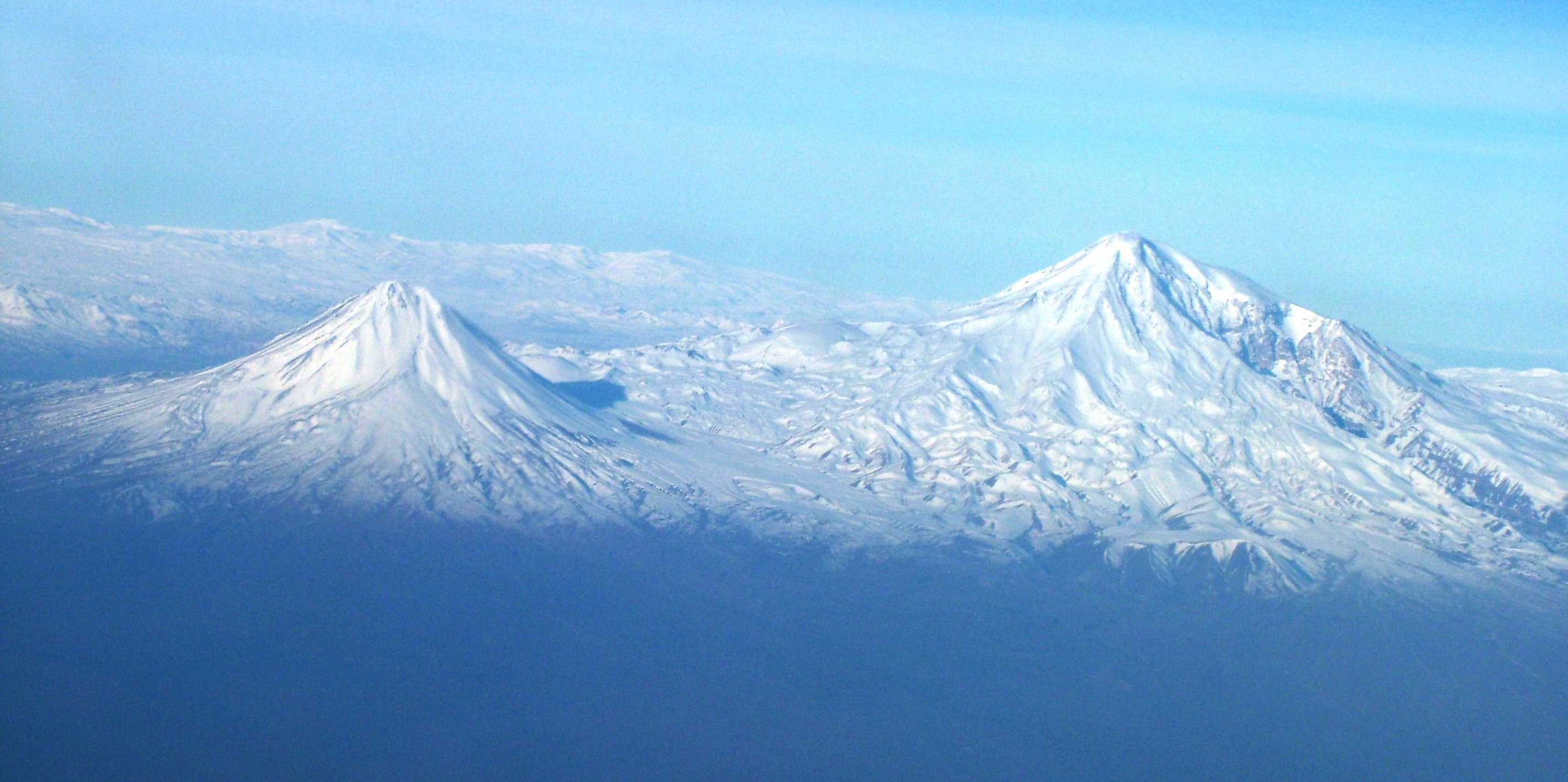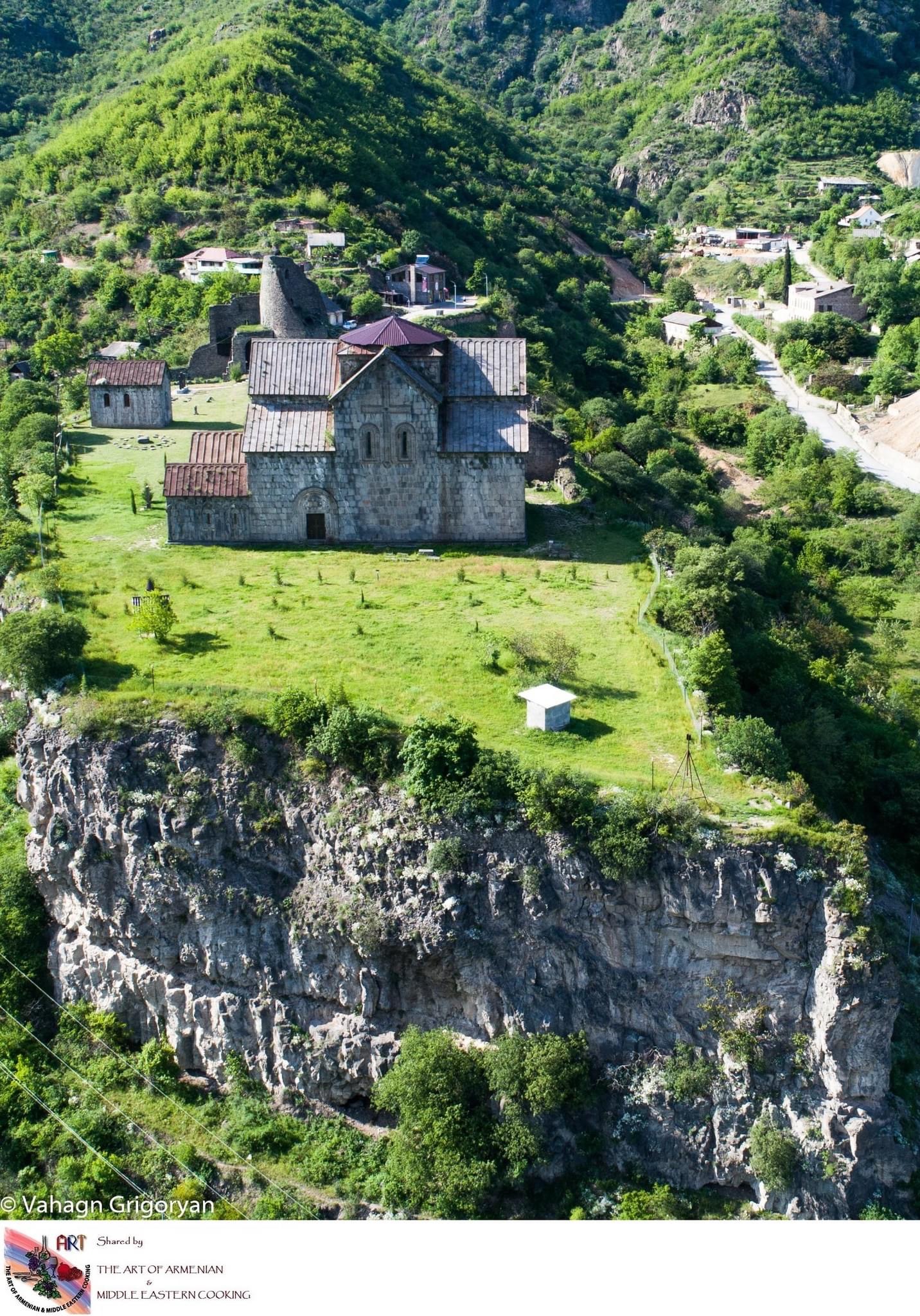Return
|
Ref ID: 1AR2022/8591 | Posted On: 28-05-2022 | Updated on: 28-05-2022
|
|
Akhtala Monastery - Lori Province
Akhtala (Armenian: Ախթալայի վանք); also known as Pghindzavank (Armenian: Պղնձավանք, meaning Coppermine Monastery) is a 10th-century Armenian Apostolic Church monastery located in the town of Akhtala in the marz of Lori, 185 kilometers (115 mi) north of Yerevan. The monastery is currently inactive. The fortress played a major role in protecting the north-western regions of Armenia (Gugark) and is among the most well preserved of all in modern Armenia.[3] The main church at the compound is famous for its highly artistic frescoes, which cover the inside walls, the partitions, and the bearings of the building. The modern name of Akhtala was first recorded in a royal decree of 1438. The etymology of the name Akhtala is believed to be of Turkic origin, meaning white glade. The original Armenian name of the settlement where the monastery is built is Pghindzahank, which means copper mine.
The fortress
Between 1887 and 1889 the French archaeologist Jacques de Morgan discovered 576 rectangular stone sepulchers, along with cultural items made of clay, bronze and iron near Akhtala dating back to the 8th century BC. The settlement of modern Akhtala was known as Agarak in the 5th century. The fortress was almost certainly built on top of Bronze and Iron Age foundations. It was built in the late tenth century by the Kyurikids, this branch of the Bagratunis originated from Gurgen (the name was pronounced Kyurikeh in the local dialect of Gugark). He was the son of the patrons of Sanahin and Haghpat monasteries located not far from Akhtala, King Ashot III the Merciful and Queen Khosrovanush. Gurgen's brothers were King Smbat II the Conqueror and Gagik I Bagratuni, under whom the Bagratuni Kingdom of Armenia reached the peak of its prosperity.
Ashot III established the Kingdom of Lori (Tashir-Dzoraget Kingdom) in Gugark for strategic reasons and enthroned Gurgen in 982. Gurgen along with his brother Smbat are depicted on the sculptures of the patrons in both Sanahin and Haghpat. When the Tashir-Dzoraget kingdom fell as a result of Seljuk raids the Kyurikids migrated to Tavush and Metsnaberd yet they maintained ties with their ancestral fortress and compound in Akhtala. The fortress was built on an elevated rocky outcrop surrounded by deep canyons from three sides forming a natural protection. The somewhat accessible parts between the cliffs are reinforced by towers and walls. The only entrance to the compound is on the northern side protected by bell-shaped towers and walls. The walls and towers of the fortress are built of bluish basalt and lime mortar. The Kyurikids gradually lost their influence under the Seljuk grasp by the end of the 12th century.
The monastic life was revived in Akhtala when the Zakarians heading the combined Georgian and Armenian forces liberated most of Armenia. The 13th-century historians Kirakos Gandzaketsi and Vardan Areveltsi called the area Pghndzahank (copper mine), because of rich copper deposits in the surroundings. Gandzaketsi writes the following: "Ivane, Zakare's brother, also died [that year] and was buried at Pghndzahank' near the church which he himself had built, taking it from the Armenians and making it into a Georgian monastery."
Pghndzahank became the property of Ivane Zakarian in the 1180s. While Ivane's brother Zakare was Armenian Apostolic, Ivane had accepted Georgian Orthodoxy in the Georgian court. Several monasteries in northern Armenia were converted by the Zakarians-Mkhargrdzeli to Georgian Orthodoxy, a prominent example is the monastery of Kobayr. By doing so Ivane enhanced his position within the Georgian court and gained influence among the Chalcedonian Armenians who mostly inhabited Northern and North-Western Armenia. The Zakarians began to lose control starting in the 1220s during the disastrous Mongol invasions of Georgia. The son of Ivane, Avag was forced to recognize his subordination to the Mongol leader Chormaqan. The Mongol rule continued until 1340 when it was interrupted by successive conquests of Turkic tribes. The Turkic tribe of Kara Koyunlu began attacking the Caucasus and took control of most of Armenia proper by 1400. Their rule was interrupted by the conquests of Tamerlane. One of the cliffs that surrounds Akhtala is known as Lenktemur, named after Tamerlane who according to local tradition buried one of his wives under the cliff.
Since the late 18th century the monastery serviced ethnic Greeks who had settled in Akhtala in order to work in the gold and silver mines. Roughly 800 Greek families were moved from Gümüşhane in the Ottoman Empire to Akhtala in 1763 by the Georgian King Erekle II.The Greeks called the monastery "Meramani". The Greek miners have left inscriptions on the monastery walls.[3] In the 19th century Akhtala was taken over by the Armenian princely family of Melikovs.
Currently the monastery has its pilgrimage days on September 20–21. Armenians, Greeks and Georgians visit the monastery on this occasion. The Ambassador of Greece, Panayota Mavromichali visited the monastery on September 20, 2006. An ore mining and processing plant in Akhtala has been dumping copper mine tailings in the pit below the monastery. This has been classified as a threat to local residents.
Surp Astvatsatsin (Holy Mother of God) church
FOR FURTHER READING
https://en.wikipedia.org/wiki/Akhtala_Monastery
Ախթալայի վանք
PHOTOS COURTESY OF
Vahagn Grigoryan (ArmTravel)



